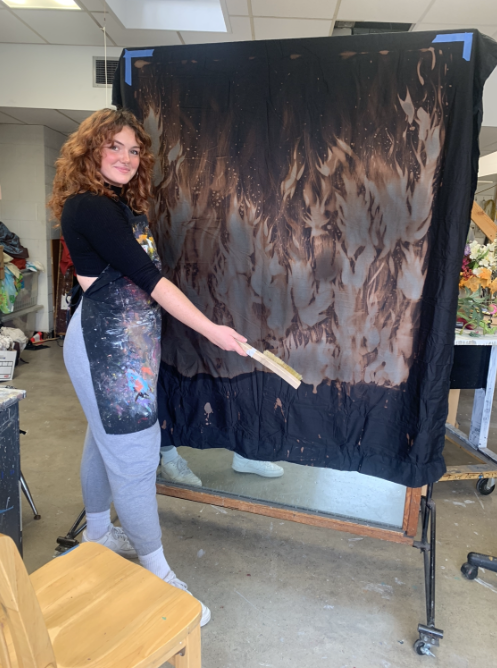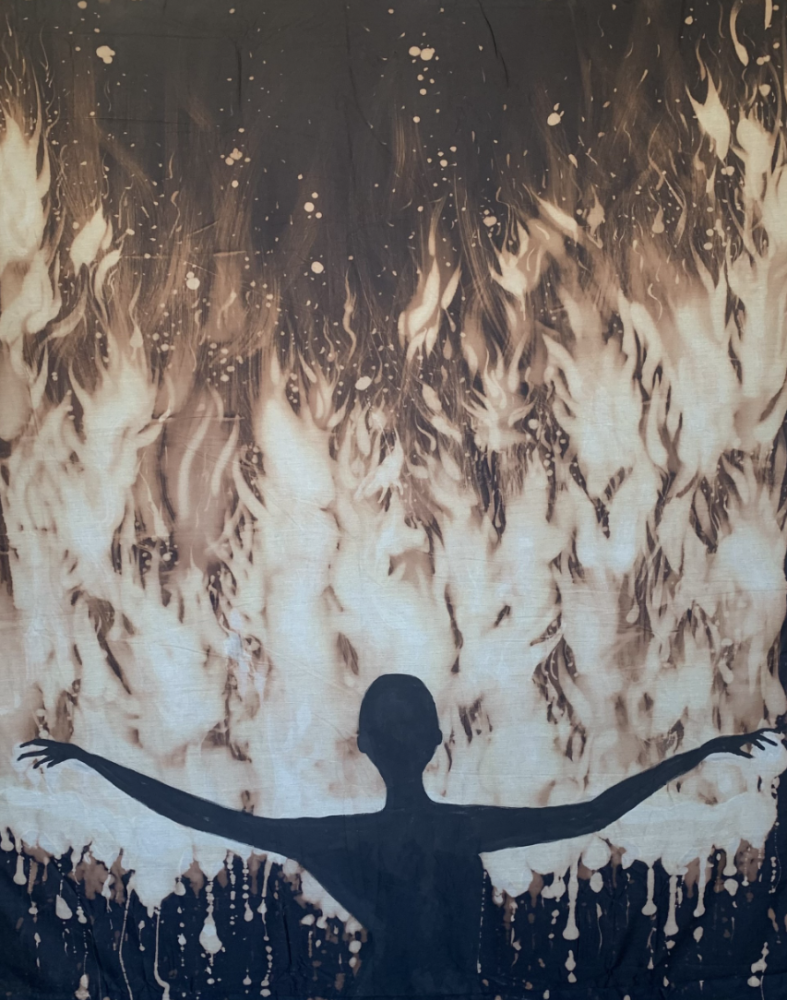Science and Art Connect
Find out how Ashley Kemm, a senior graduating this May, found a way to combine painting, her hobby, and chemical engineering, her major into a work of art during the painting class she took at Mizzou's School of Visual Studies.
Tell me a bit about where you are from and what brought you to MU.
- I am from Webb City, MO which is a small town outside of Joplin, MO. I used to be a very active member of my school's band program and visited Mizzou on multiple occasions for all-state solo and ensembles. I fell in love with the campus and knew it was the place I wanted to be after high school.
If not art, why did you choose to take this painting class?
- I have painted as a hobby ever since I was a little girl but just have never gotten the chance to take an actual art class in high school or in college. Over quarantine that is how I spent the majority of my time and I have been using this class as an excuse to set aside time to make more art now that quarantine is over. It is one of my favorite past-time activities and this class has already taught me so much more than what I was learning just doing it on my own with cheap $5 acrylic paints from Walmart.
What does this piece mean to you?
- This piece was my way of establishing control over something that feels out of hand. While making the piece, I ran into many problems with the diluted bleach solution bleeding, dripping, and in general being hard to work with. Unfortunately, all moments of contact between the cloth sheet and solution are permanent. It was up to me to manipulate these 'mistakes' and take control over the chemical on my paintbrush and the fire spreading before me.
It looks like you combine chemistry with art in this piece, is that intentional? Why?
- This is intentional! At the beginning of this semester, our lovely professor Miss Farëna encouraged us to incorporate our majors into our artwork. As a chemical engineer, I was not quite sure how to do this without introducing some harmful chemicals, so I settled for a commonly used one: bleach. Bleach is able to 'leach' the color from a piece of fabric in one of two ways: breaking the chemical bond of the chromophore (a color-producing portion of pigment) rendering it non-reactive with light, or converting double bonds to single bonds, again making them non-reactive to visible light. In summary, the addition of bleach does not 'remove' anything containing color, it only changes the way the material interacts with light. This simple manipulation allowed me to incorporate some of the science of my major into the science of painting.

